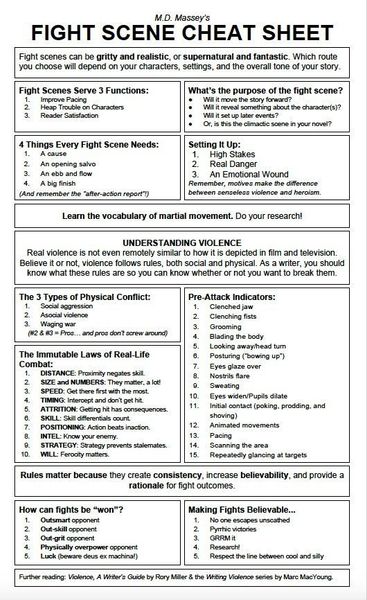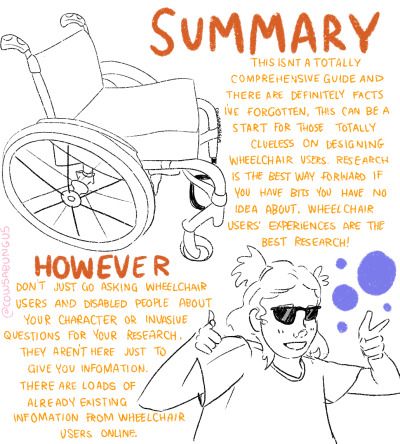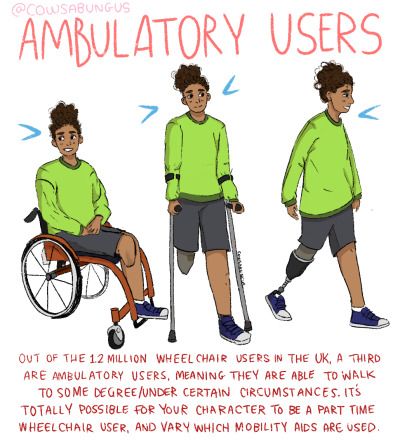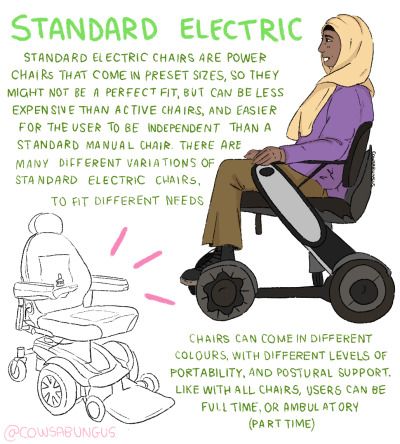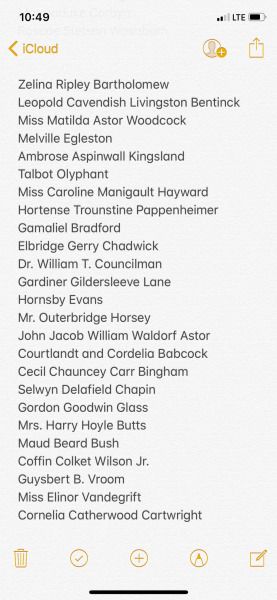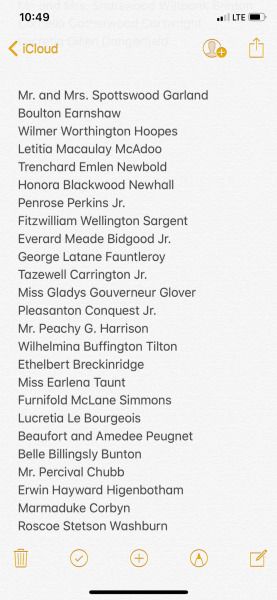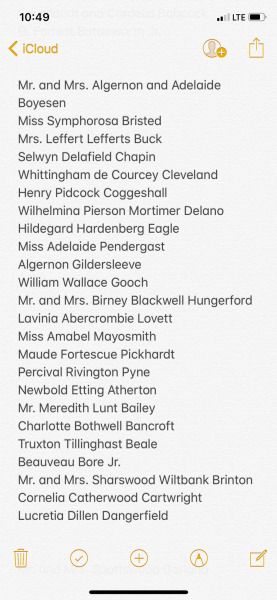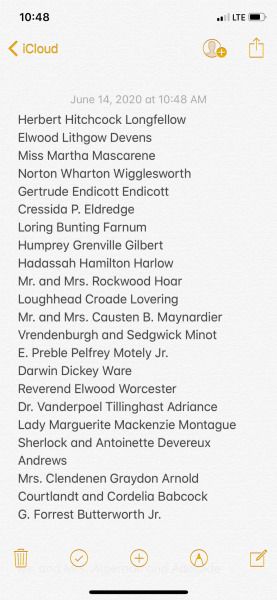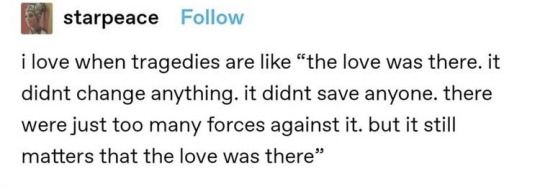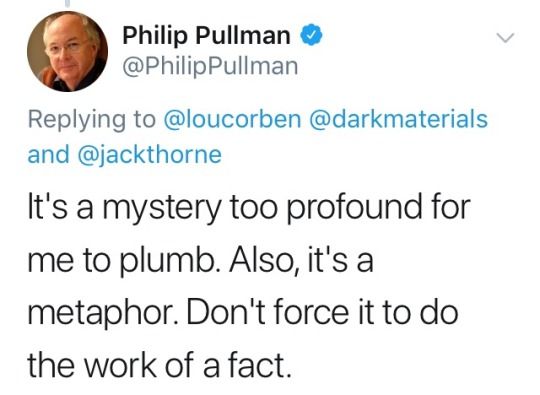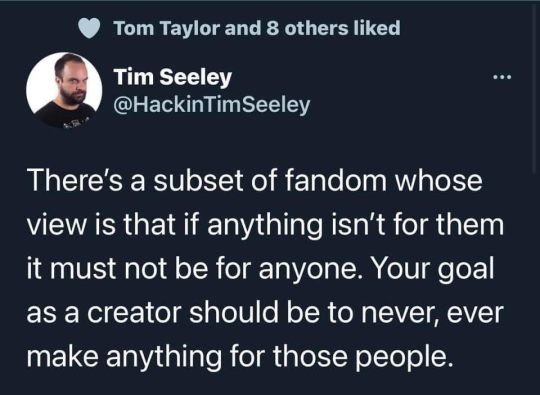25 Reasons Why I Stopped Reading Your Book – Chuck Wendig: Terribleminds
http://terribleminds.com/ramble/2016/08/09/25-reasons-why-i-stopped-reading-your-book/
1. I just don’t want to read it. This isn’t a helpful comment by any stretch of the imagination but it’s vital I get it out there — sometimes, I pick up a book, I start a book, and it’s a puzzle piece whose nubbins and divots don’t line up with mine. Book’s not for me. I’m not for it. End of story.
2. I have no context. None. Zero. Crafting the first thirty or so pages of a book is itself a vital and elusive art. You are required to pack so much into so little while at the same time not overdoing it. But the greatest thing missing from too many books is context. Books that begin with characters just doing shit or saying shit or thinking shit are fine — but from the first page, I want context. I don’t need all the details, but I need some sense of what’s going on and why. I need to be rooted in the story fast as you can get me there. You can meander, but goddamnit, meander with purpose. I need to know why you’re writing it, why the character is here, and why I should give a hot cup of fuck in the first place. This isn’t easy to do! Writing those early pages is a combat landing in terms of narrative — you’ve got to pull us all the way from the atmosphere to the ground in a thousand words. It’s hard, but WE NEEDS THE CONTEXT, PRECIOUS. *gums a fish*
3. Another thing I need that you’re not giving me: stakes. This is tied into the context. **But if I don’t know the stakes — what can be won, what can be lost, what’s on the table — then why am I reading?** Why are we here? Where are my pants?
4. Too much action. Once again, this is tied a little into the context problem, but I really hate books where I start them and suddenly we’re thrown into BULLETS WHIZZING AND KARATE WHALES AND A THOUSAND CREAMY PASTRY NINJAS and it’s five pages of cool-ass katana action and yet I have no idea what’s happening. Every punch is clear as day, but the motivation behind the scene or sequence is invisible. Realize that the mechanisms for resolving conflict are not the same as the conflict. A fistfight is not a conflict. _Why _they’re punching the beefy fuck out of each other? That’s the conflict. Jealousy. Stolen property. Revenge. Whatever. Conflict is the reason behind the fight, not the fight itself.
5. The book is all surface. A story isn’t just one thing. It can’t just be what you see, what you read — it has innumerable added layers, all invisible but still keenly felt. Like, okay, consider a sports car. The fanciest fastest motherfucker you can think of. The love child of a Lamborghini and a SR-71 jet. That car isn’t a model. It’s more than its frame and its paint job. Some of the interior you can see: seats, dashboard, steering wheel. Some parts you can see only if you look hard: the engine under the hood, the dead guy in the trunk. (I know cars like that don’t have trunks you can use to store dead bodies, but just play pretend.) Other parts will never be seen by you: the engine’s deepest interior, or the endless human and machine hours put into designing the car and the engine and the experience _of _the car. The car is more than just its function, too. It has style. It has a vibe. Designers don’t just plunk down a seat thinking, WELL THE DRIVER NEEDS TO SIT. It’s that, but then it transcends function. It becomes, _how do we want the driver to feel? How do we want him to look in his own head and to other drivers? _The car has a theme, a mood, it has a message. Your story is like that — or, it should be. It can’t just be CHARACTERS SAY SHIT AND DO SHIT. That’s there, but it’s just the paint job. A story operating without deeper layers is a shallow narrative, and I ain’t got time for that.
6. The characters all sound the same.
7. The book starts off too, um, genre-shellacked. What I mean is, if it’s sci-fi, it’s loaded for bear with bewildering sciencey stuff, or if it’s fantasy it’s all funky names with magical apostrophes, or if it’s horror it’s more interested in soaking the pages in raw, red gore and horror tropes. Context is king, yet again. Character is everything. Root me in the character. Make me care. Then layer in the genre elements. It’s like a cake — it’s easy to make icing taste good, but too much of it is gross. (Don’t tell this to my son, who will vacuum the icing into his maw while discarding the cake part. The little barbarian.) The cake is the foundation. It’s what holds up the rest of the stuff. Cake is character, character is cake. Now I’m hungry. I want cake. Someone get me cake. YOU THERE IN THE THIRD ROW. CAKE ME. NOW.
8. Speaking of genre, I’ll put a book down if it feels too samey-samey. It’s not that you can’t do interesting things with well-wrought tropes, but usually, I can tell when you’ve performed the narrative equivalent of a Human Centipede — where you digest one kind of fiction and then excrete that fiction back out into the world. It’s like Taco Bell — you’re just renting it and returning it to the ecosystem without actually processing it. I’d rather you make the genre yours. I’d rather you read more broadly and bring outside influence to the work.
9. No voice at all. This is a personal preference, to be clear — some readers want an author who disappears into the background. I don’t. I want the author to emerge a little, like a shadow in the rain. Sometimes that means word choice or sentence construction or rhythm. Sometimes it’s in the themes that present themselves. The book isn’t ALL YOU, ALL THE TIME, but I still want to see your bloody fingerprints at the margins of the page. I’ll put it this way: Dan Brown’s work is, to me, about as cardboardy as it comes. No harm or foul, because hey, his books are whiz-bang successes. But then you look at someone like Stephen King, whose work always reads like Stephen King. His ease of storytelling doesn’t betray his voice. Daniel Jose Older’s work feels like Daniel Jose Older’s work. Victoria Schwab’s work feels like — drum roll please — Victoria Schwab’s work. (I like these authors because when I read their work, it’s not that I know what I’m in for, it’s that I know I’m in the company of a capable, confident storyteller. Some authors view this as a brand, but a brand is about a pre-existing set of chosen permutations — a brand is about comfort. I want voice. I want to trust in the story even as it brings me discomfort.)
10. Too much voice will kill my interest, too. Comes a point where you gotta get out of the way of your own story. (Again: Stephen King is amazing at this. His work feels like his work, but he’s also not tap-dancing in front of the tale — he sits very comfortably behind the curtain.) Your story isn’t a stunt. It isn’t a stage. You’re playing drums, not playing lead guitar.
11. I’m bored. I get bored easily, to be clear. In this day and age, I’ve got a lot of very dumb stuff competing for my attention and I fall prey to it too easily — it’s a lot easier to check Twitter than read a novel. People could read a book, or they could hunt Pokemon. At the same time, though, I don’t think it’s an unfair ask when I say it’s important a story be interesting. One of the most vital goals of a storyteller is to capture attention. It’s like trapping a fly in a cup. It is necessary to be able to — from the first sentence — snap your fingers and hypnotize me with the tale at hand. And that means being interesting. The question of _what’s interesting, _however, is a many-headed, snarly beast, but at the very least, look to how one tells a story in person. Think about how you would keep people’s attention. How would you spark their interest? How might you give them just enough to keep listening? Worry, danger, conflict, desire. Imagine telling a story in such a way that if you just quit in the middle of a sentence, you’d leave people hanging with a HOLY SHIT WHAT HAPPENS NEXT look on their dumbfounded faces. Write a book like that.
12 . The balance of mystery is off. Mystery is tricky. Every mystery is a question mark, and as I am all-too-fond of repeating, a question mark is shaped like a hook for a reason. It sticks in you and pulls you along. But too many question marks and you’re pulled into asplodey viscera like that guy from Hellraiser. We need mystery early on — little mysteries that tease us forward without overwhelming. Or one big mystery that will cast its void-like shadow over everything. We still need a rope to feel for in the dark, though — something we use to pull ourselves a long. Too many questions, too much mystery, and we feel lost. We have no rope, no anchor. We have only hooks and darkness. And also cake. What I mean is, I’m still hungry for cake, you bastards.
13. Not enough cake in your story.
13. Fine, here’s a real #13: JESUS GOD THIS BOOK IS SLOW. I don’t need every book to have thriller pacing, though I admit I do prefer a snappier, zippier narrative. But while I do not require your book to read like it’s duct-taped to the back of a cheetah fixed with some manner of rectal rocket, I do want to feel like we’re getting somewhere in a way that respects the story and respects the time of the reader. Some books I read I feel like that stormtrooper on Tatooine — “Move along, old man in a landspeeder. Go on, just go, c’mon. Vertical pedal on the right, Grandpa Kenobi, chop-chop.” A story is liquid. A story moves. It doesn’t need to be a raging rapids, but don’t let it be a stagnant puddle. That’s how you get mosquitoes.
14. The story is too busy, too early. Cleave to simplicity. Simple goals are better than complicated ones. You can build up to bigger conflicts, but at the fore, think conflicts that are primal, that are easily parsed by the largest number of us. A lost child. Revenge for a death. Grieving over someone gone. Broken love. Simple, forthright things will grab us and root us. Common, fundamental problems are key — then you can spin them in whatever way fits the story (A DRAGON WANTS REVENGE ON A LIVING STARSHIP BECAUSE IT KILLED HIS ROBOT LOVER). Start small. Begin simple. Complexity comes later.
15. Also, this is true with language, too. If your book’s language is muddy or bombastic, I’ll check right out. Aim for clarity above any kind of GRAND MAJESTY OF THE HUMAN TONGUE. You’re not trying to impress us with frippery. Writing is a mechanism. It is a means to an end. Writing conveys more than itself. Writing is a conveyance for story, for idea, for character, for theme, for vision. Seek substance over style. Pursue precision in language over a noisy parade of words.
16. The character has done something I hate. And this is a weird thing, because it’s not a character’s job to be likable or to perform actions perfectly in line with my own morality, but if by page five I find out he’s a puppy-kicking baby-shitting rapist, I’m done. Sorry. Maybe this is a tale of his redemption or maybe you just want me to empathize with this horrible person, and that’s fair. I’m just not going to do it. I don’t need characters to be likable. I do, however, need them to be livable — meaning, I need to find some reason to want to live with that individual for 300+ pages. Some things are dealbreakers, though, and a character who is too vile or somehow unredeemable by my own metric… then I just can’t stay in the story.
17. Whoa, way too heavy a hand with the worldbuilding, pal. Ease back on the infinite details, okay? The worldbuilding should serve the story. The story is not just a vehicle for worldbuilding. I want to eat a meal, not stare at the plate. The plate can be lovely! You can work very hard on the plate. But not, I’m afraid, at the cost of the food that sits upon it.
18. Similar to the above? Your book has way, way too much exposition. Exposition is not the devil. We like exposition… ennnh, within reason. I like to treat exposition as if it’s a dirty necessity. It is an unpleasant act that must be fulfilled — it is, in a way, like air travel. Nobody likes air travel. These days, air travel is basically just SKY BUS, full of as many dubious weirdos, like that guy who keeps taking off his shoes, or that other guy who sweats hoagie oil, or those people who were somehow allowed to bring on a Tupperware tub of warm sauerkraut. But if you wanna get to that place you wanna go: you hop on the plane and you get it over with. Exposition is an act that is best served by figuring out how little of it you can get away with while still serving and continuing the tale. Get in. Get out. Get it over with.
19. OH MY GOD I AM BEING CRUSHED BY THESE WALLS OF TEXT. Stories are beholden to rhythm. Short sentences, long sentences, diverse paragraphs, mixed-up word choice. But if I open a book and it’s just one epic paragraph after another, after another, after another, my eyes start to become tired. I pee myself and pass out. It’s not a good scene.
20. I’m confused. No idea what’s happening. Have to keep backtracking to find out.
21. I gain no sense of why now? Every story you write should begin with that essential question: why is this story happening now? If we are to assume that a story is a break in the status quo — and to my mind, stories are exactly that — then the timing of the story is vital. What precipitated the narrative? What events inside the story make it necessary, and necessary at this moment? Did someone just steal the Death Star plans? Is this a Christmas party set in a building just as German terrorist-thieves are about to initiate an, erm, hostile takeover? Has there been a wedding? A funeral? A discovery? An attack? HAS THERE BEEN AN AWAKENING AND HAVE YOU FELT IT? Some stories lack an answer to that question, _why now, _and I can feel it. It undercuts the urgency of the tale. And urgency is everything. Creating urgency makes the story feel vital and it keeps people reading. (Lending the narrative that urgency is a lesson unto itself, of course.)
22. Not enough sodomy. Okay, just seeing if you’re still reading. But seriously: cake and sodomy.
22. Okay, real #22 the plot exists outside the characters. They do not control it. They do not contribute to it. Nobody is directing it but you, the Overarching God-Author. You’re like a railroading DM who has the adventure set one way and any time the party wants to try something different (“We’d like to make friends with the Demogorgon!”) you short-circuit and punch the plot to do what you want it to do, not what feels natural to the characters, their motivations, and their actions. Plot should be internal, growing into the narrative like coral, like bones, but yours is external: it’s all exoskeleton, all scaffolding.
23. The plot exists only because of stupid, wrong people and their very bad, very stinky decisions. I’m not saying characters cannot and should not make mistakes. Characters needn’t — and shouldn’t — be perfect. But if the plot only exists because they’re jerky dumdums who just make jerky dumdum decisions, then ennnnyyeaaaah not for me. I prefer you treat your characters as if they’re all intelligent with respect to their own worlds. That doesn’t mean high-IQ. It doesn’t mean a plumber knows how to build a fucking teleporter. It just means within respect to their own life and experience they have some smarts going on.
24. Your characters aren’t acting like people. They’re acting like plot devices. This is related to #22 and #23, but what I mean is, you can feel how they’re acting against logic and their own emotional intelligence to further plot points. They keep secrets when keeping secrets is neither prudent nor interesting — it’s just that the secret is what keeps the plot alive. They lie when it makes no sense to lie. They perform actions like the victims in the horror movie, just stumbling into danger because they need to die to chain to the next scene in the sequence of events.
25. Everything is just a series of scenes. Scenes need to connect. They are bound by a throughline. But yours just feel like disconnected bits — vignettes and moments and setpieces that have been placed next to each other but given no connection. They are rooms without doors or windows.
